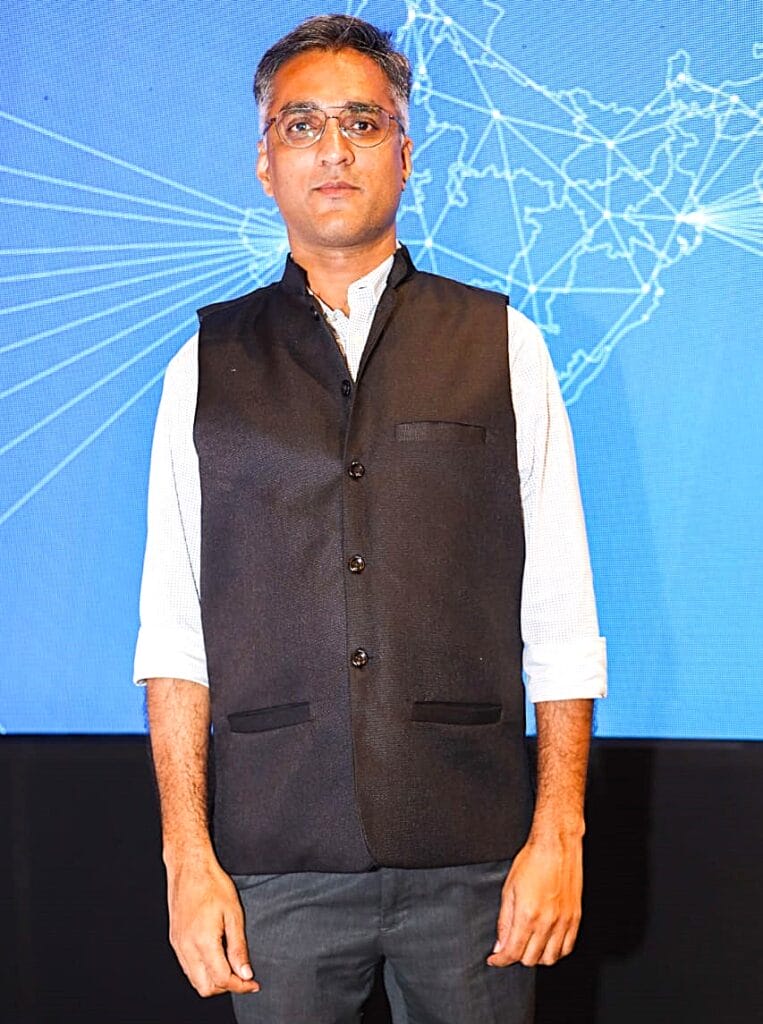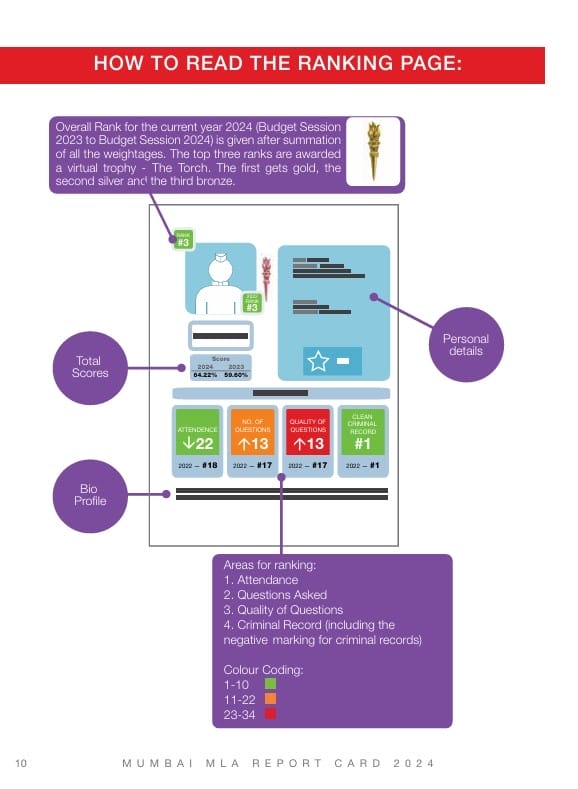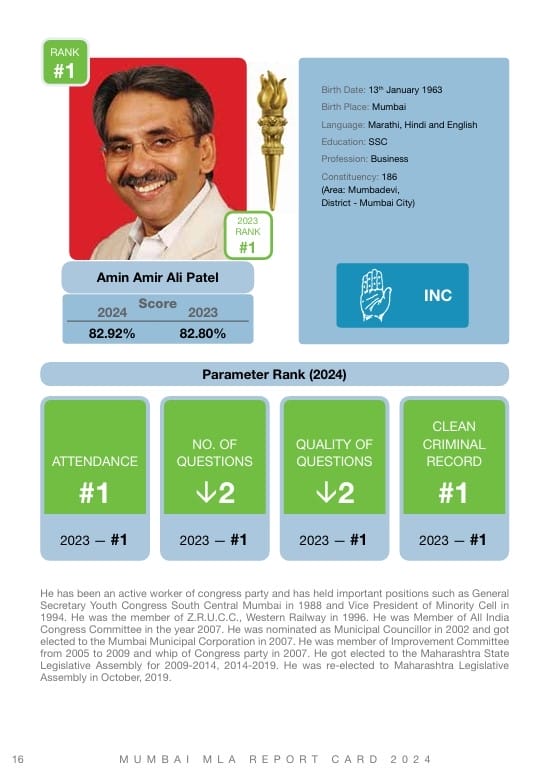As Maharashtra assembly elections draw closer, all one gets to hear about is political clashes, leaders switching parties, candidates promising the moon and more and an overall atmosphere of unreal declarations amidst unbelievably high decibel campaigns.
In this cacophony, Mumbaikars, who are notorious for lukewarm voting patterns, may feel more distant than ever. The city has been in a state of perpetual construction and redevelopment activities with several infrastructure projects such as the Coastal Road and Metro phase III going on. Pollution has worsened and so have condition of roads and overall quality of life.
Some of this may be necessary but our elected representatives can surely address many of these issues and make it better. It is their duty, but often elected representatives perform better if civilians get involved and demand what is their right.
That’s why knowing your area’s MLA, his work over the past five years and what s/he and the party they represent promises is important. Making an informed choice is not only our duty but also what the city needs in today’s times.
Praja, an NGO that works on civic issues, brings out MLA report cards annually, among other reports. These report cards evaluate MLAs based on parameters such as attendance, questions asked, and so on.
Citizen Matters had a long discussion with Milind Mhaske, CEO, Praja Foundation about the MLA report cards. Based on that interview, we have put together an explainer on the report cards that will help you understand your MLA better, so that your vote is an informed choice.
Why have an MLA report card?
The idea to have an MLA report card came when Milind Mhaske was involved in civic awareness activities such as “meet your candidates.” He wanted to enable a system of feedback on the work done by the elected representative. Later, at Praja, it was conceived of as an appraisal of their work.
Milind and team felt that just as we all get appraised in our jobs annually, it would be beneficial if performance of legislators are evaluated annually. This evaluation is not just a critique but also puts a spotlight on those who do well.
Since the report cards are published annually, the legislators can take a cue from it and improve upon their weaknesses. It also aids citizens in understanding the work and responsibilities of their representative. This helps in course correction during the tenure, rather than waiting for the ultimate “exam” that comes every five years.
Read more: What are the roles and responsibilities of your elected MLA?
Trends observed in MLA report cards over a decade
Consistently putting objective data in the public domain has had its impact in some ways. Praja has been putting out report cards on MLAs as well as councillors for civic bodies in Mumbai and Delhi.
To illustrate the change that such data can bring about, Milind gave an example of a senior councillor, who had a problem with poor score due to absenteeism in ward level meetings. However, when he discussed and Praja suggested that he attend the meetings to help other younger councillors, he started attending and felt it was beneficial for his own people as work got done faster.

Since 2011, when the first MLA report card was published, Milind has observed that MLAs do take their performance seriously and even try to negotiate or question a certain score or ranking or parameter.
Milind observes that over a period of time there is better understanding of the role of legislators and how that is different from the social work they do. For example, many MLAs may undertake or support activities such as a health camp in their constituency, but the responsibility is to raise the need for such camps in the assembly and get the government to formulate and implement a health-related policy.
“Data has a very important place when it comes to making things happen. We could probably use data to get a lot of things going. Governance, democracy, getting the politicians to work. We don’t really appreciate and understand it adequately,”says Milind.
Parameters used to rank or score MLAs
Earlier Praja had three main criteria: present, past and perception:
‘Past’ was based on affidavit data, education, and financial information such as income tax returns and assets and liabilities.
‘Present’ was more about what they did as legislators during their latest tenure. It includes data on attendance, fund utilisation, debates participated and questions asked.
‘Perception mapping’ was considered important in the initial years. After 11 years of exhaustive perception mapping surveys, Praja had adequate data to show that perception data matched with present and past data. So this third criterion has now been removed from the MLA report card.
For the purpose of marking and analysis, only the legislative role is taken into account. In the report, 87% of data is accounted for by present work – attendance, questions, importance of questions and local area development. Remaining 13% data is about the “past.”
The final score is an aggregate of individual scores on each parameter. “Overall Rank for the current year 2024 (Budget Session 2023 to Budget Session 2024) is given after summation of all the weightages. The top three ranks are awarded a virtual trophy – The Torch. The first gets gold, the second silver and the third bronze,” explains the report.
It is important to know that a criminal record has negative marking. The report cards also take into account if any new cases are filed against the sitting MLAs, and if a chargesheet has been filed in any of the cases. The cases that are considered are serious cases such as riot, murder, extortion, which attract sentences of more than two years on conviction. Cases registered for peaceful protests, or holding dharnas etc. are not considered.
How you can utilise the MLA report card
Milind says that the report card can be best used by everyone to understand the roles and responsibilities of an MLA. He points out that the report card should be read at various levels, the most obvious being the distinction between ranks and scores.
While ranks are a result of cumulative scores, it is important to go through individual scores on various parameters to see where the MLA has performed well and the areas s/he could improve upon.

The report card has a page dedicated to each MLA. It has basic information such as the political party they represent. It has present and previous year’s ranking along with up and down arrows which show their improvement on the parameters.
Praja also created four areas of classification to analyse the questions asked by MLAs in the Assembly – social infrastructure, physical infrastructure, economic infrastructure and agriculture and food infrastructure. “These are the major areas pertaining to which they do ask questions, or they should be,” says Milind.

While attendance and number of questions asked by MLAs in the Assembly is fairly straightforward to calculate, scores attributed to quality of questions need some explanation. Milind says that questions that are not in their domain have less weightage and questions that are related to their constituency and their scope of work have more.
For example, discussing the need for government-run health camps for vaccines in the constituency would carry more weightage than discussing an issue out of purview of state legislature such as whether India can host Olympics, which the central government can address.
He emphasised that people should carefully observe certain work done merely to create a certain impression, such as MLAs attending local functions or getting road repairs done.
Researchers, analysts, political leadership, journalists can also use this report better and communicate issues to people.
MLA report card: A tool to understand roles and responsibilities
Elections are the final test that would decide the fate of existing MLAs based on their work and performance in the constituency. However, as elections draw closer, and manifestos are released it becomes necessary to cut through the noise and evaluate their entire tenure.
Running a government and making sure the government runs efficiently are both full time jobs, says Milind. “So, it’s important that through the five-year term we interact with our elected representatives and give them feedback on what our needs are, what are the issues that we are facing,” he says.
It also helps in understanding their role and performance in the legislature.
“It can’t be done just at the end of a five-year term. You want to give that person periodic feedback so it will allow the person to improve on it. Service delivery will get better and ultimately that is what we want. We are all part of democracy and have to be involved,” says Milind.
This also will help in improving civic political awareness of people. “We still have a lot to do about civic politics,” says Milind, adding that whatever happens in the government affects all of us.

Pointing out that in developing economies people in higher socio-economic brackets do not bother adequately about governance and politics. It is a poor reflection on our society. On the other hand, in developed economies those in higher socio-economic brackets are more aware and involved.
He pointed out that affluent people have removed their stakes in the system, be it public health care system or public transport system. He says systems will improve if we put our stakes back and start demanding better service delivery.
| You can access the latest MLA report card here. |